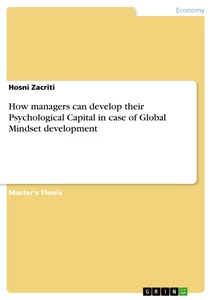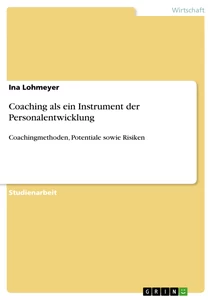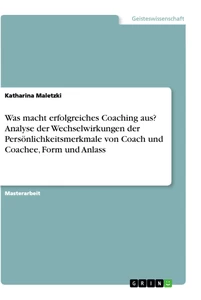
Coaching
Coaching is a term used synonymously for many different consulting techniques but what does it actually mean?
Coaching can be used in a wide variety of areas: There are coaching sessions in medicine, sports, and at work, but also nutrition and life advice are often accompanied by intensive coaching. The concept has a dubious reputation: there are still no regulated training standards or quality criteria for coaches, and the methods used are diverse and often hardly researched. It is expensive, time-consuming, and the results are difficult to measure. Nevertheless, coaching has established itself as a popular instrument of personnel development, especially in companies. We want to show what this is all about and why employee coaching is not a waste of time after all.
A coach is an expert for change; they accompany people on their development journey.
Christoph Schal, graduate psychologist, master coach, and coaching trainer
Definition
The German Federal Association of Coaching defines coaching as “the professional advice, accompaniment, and support of people in leadership / managing positions and of experts in companies / organizations. The objective of coaching is the continuous development of individual or collective learning and performance processes with regard to primarily professional concerns.”
Basically, the goal of (business) coaching can either be to increase one’s own professional qualifications or to rediscover one’s own potential and learn to use it better. Coaching is an individual consulting process, a help for self-help.
Applications
Coaching is used in numerous, very different fields of practice. These include executive management, sports, personnel development, nutrition, politics, and science. The target groups include private individuals, individuals in a company or in management positions, entire teams in the business environment, in the sports sector, or training and learning groups. They all can benefit from the help of a coach. In order for coaching to be effective in all these different fields of practice, it must always include and use specific contextual techniques.
GRIN recommendation: A good overview of the topic
This Bachelor’s thesis presents a summary of empirical findings on the opportunities of virtual coaching and its areas of application. It outlines the contribution to the coaching industry in today’s working world and society. Several fields of application as well as aspects important to ensure a successful process, requirements from managers as well as changes virtual coaching entails in the educational sector are analyzed. The data collected in this paper is based on recent research in North American and Australian research and business magazines as well as European sources.
Occasions for coaching
Coaching processes are always tailored to individual cases, i.e. either to teams or to individuals. This results in a variety of occasions. Above all, leadership skills in the modern, digitized world of work are frequent reasons to take advantage of coaching. This also includes topics such as change management and conflict resolution. In addition, burnout prevention and dealing with personal crises are current topics that may require coaching.
In general, the occasions for coaching can be divided into two main areas: crises and the desire for improvement. A distinction can be made between individual and collective crises or the potential for improvement.
When does coaching make sense?
Coaching can therefore help in crisis situations. It always makes sense when a crisis is looming and not only when the crisis has already struck because coaching is able to prevent and overcome acute crisis situations. If you feel like you are turning in circles and the desire for change or personal development awakens, coaching can help you set a positive development in motion and achieve new goals. Thus, it may be useful to occasionally involve a coach as a source of inspiration, for example for personality development or the strengthening of the team.
Coaching is the most effective tool for personnel development available to leaders as it can be tailored to individual situations.
Ute Wörner, Business Coach
Forms of coaching
There are different types of coaching. They differ fundamentally in the number of people involved, the type of coach, and the coaching occasion.
Coaching in organizations
Organizational, full-time coaches are mainly found in larger and innovation-oriented organizations. They are called staff coaches. Coaches who assume the role of a coach in addition to their normal work are called line coaches. The coaching level of a staff or line coach is limited to the lower and middle management as the status level and formal placement of an organizational coach are usually not sufficient for higher management levels.
Advantages of coaching in organizations
- good relationship with middle and lower managers
- knowledge of the organization’s internal processes
- educational path of the coach can be checked by the HR department
- costs are lower than with third-party coaches
- no service contract required
Disadvantages of internal coaching
- lack of acceptance of the organizational coach by high-ranking executives
- limited objectivity of the coach
- lack of knowledge of other organizations
- discretion is often not maintained
- possible stigmatization of the client
- new insights that support the company in the long term are often missing
Third-party coaching
External coaches carry out their work as coaches full-time and are often consultants who work in a management consultancy or they are self-employed specialists. They can be recruited by private individuals or by an organization. As outsiders, they are rather impartial and have an unbiased view, which is why executives in upper management are almost exclusively advised by external coaches.
Advantages of third-party coaching
- building a good relationship with senior executives
- greater objectivity/neutrality of the coach
- no control and assessment function
- discretion and anonymity are maintained
- coach has a wide range of know-how from other organizations
- variety of methods
Disadvantages of third-party coaching
- coach must first acquire knowledge of internal organizational processes and special features of the organization
- described views depend on the subjective impressions of the coachee
- no certainty about the qualification of the coach as there is currently no universal training path
- difficult appointments due to high workload of coach and client
- high costs
Individual coaching
The consultation of a single person is called individual coaching, regardless of whether it is a third-party or an organizational coach. Many coaching experts think that individual coaching is the only correct coaching option due to its many strengths. Therefore, it is not surprising that the terms “individual coaching” and “coaching” are often used interchangeably. Individual coaching serves to build up interdisciplinary (e.g., self-reflection ability) and professional competence (e.g., presentation skills) and can be used both for short-term measures and for long-term support. Compared to group coaching, discrete and confidential work is easier with individual coaching and it can take place without the knowledge of others. This allows the client to talk more openly about the existing problems.
Group coaching
All measures in which several clients are coached at the same time are called group coaching. Depending on the goal and composition, there are different techniques such as team coaching or project coaching, which are explained in more detail below. In group coaching, the individual members benefit from the group dynamics and the different perspectives and experiences. An advantage over individual coaching is that group coaching cannot be abused to enforce individual interests and the costs are evenly distributed among the group members. A disadvantage of group coaching is that confidential work on personal topics is more difficult. In addition, discretion cannot be guaranteed for groups as it always takes place with other people being present.
The decision for group or individual coaching always depends on the framework conditions. Individual coaching is particularly suitable for individual, intensive and confidential work, whereas group coaching is useful for improving interaction and conflict resolution within groups.
Team coaching
Team coaching, a special form of group coaching, is aimed at working groups that focus on jointly coordinated goals or go through a goal-finding process in coaching. All team members contribute their perceptions so that a jointly perceived image of a situation is created. The leadership and performance behavior of the team is optimized by clarifying conflicts within the team. The main task of the coach is to enable the team to carry out its tasks independently and without complications. The success of a team coaching increases and falls with the size of the group. The larger the team to be coached, the more difficult it is for the coach to build a trusting relationship.
Project coaching
Project coaching is also part of group coaching and is a sub-form of team coaching. In this form of coaching, a coach supports a project team in the preparation, introduction, and support of a project. The project team works on a specific task for a limited period of time. The aim here is usually to promote the cooperation of the project team members, to provide support and advice about the corresponding project objective.
Online Coaching
In online coaching, the coach and client do not meet in person but communicate with the help of online platforms. Due to the advancing digitalization, online coaching is increasingly becoming a good tool for other coaching techniquries. The advantages of this form of coaching include location and time independence. Moreover, the costs are lower as there is no travelling involved and the meetings can take place more promptly. A weakness of online coaching is that a stable Internet connection is a mandatory requirement, especially for video conferences or telephone calls via streaming services. In addition, misunderstandings can occur more easily if the coach and client do not see each other.
As a coach, I provide a structured environment, a process, and techniques to my clients so they work on their skills and solutions independently.
Christoph Schal, graduate psychologist, master coach, and coach trainer
GRIN recommendation: The development of a global mindset
The purpose of this thesis is to develop suitable training measures for the area of global mindset development in the field of psychological capital by eliciting the experiences of German managers. The analysis is based on the individual level of a global mindset. The new theoretical lens from psychological capital is employed to gain new insights into the further development of a global mindset through a qualitative research approach.
Goals of a coaching session
The overall goal of any coaching session is to help the client identify new opportunities and guide them to take advantage of them. This also includes increasing professional qualifications and improving certain skills, for example in the field of communication or leadership skills. In addition, coaching can serve to revive creativity and work motivation if this has been lost in the stress of everyday working life.
Basically, coaching goals can be divided into four types, namely deficit-oriented, prevention-oriented, performance-oriented, and potential development-oriented goals. This table compares them for you:
Deficit-oriented goals
-
Initial situation: acute problem situations and problematic behavior
-
Examples: problems regarding in leadership behavior, conflicts or discussion needs in personal appearance
-
Coaching goal: calm the situation and resolve appropriate behavior
Prevention-oriented goals
-
Initial situation: prevention of problematic situations and burnout
-
Examples: job change, promotion of work-life balance
-
Coaching goal: preparing the client for upcoming changes
Performance-oriented goals
-
Initial situation: desire to strengthen and expand motivation and skills
-
Examples: performance improvements in the job, career development coaching, improvement of time management
-
Coaching goal: development of abilities, increased performance
Potential development-oriented goals
-
Initial situation: promotion of employees and professional development of the client
-
Examples: location determinations, reflection of role behaviors, activation of existing resources
-
Coaching goals: discovery and further development of potentials and resources
When is coaching successful?
Success depends on one’s own requirements and prerequisites. Therefore, often it is not objectively measurable but rather tangible and perceptible. For example, there are scales that should indicate the current emotional state of the content of the coaching or the willingness to change before and after a coaching session. Another tool for evaluating the coaching can be a feedback questionnaire, in which the coach asks whether the client has noticed positive changes in everyday working life.
Coaching is largely considered successful if the client feels or shows changes. This can manifest, for example, in increased mindfulness towards oneself and one’s environment but also in a more efficient problem-solving strategy or more successful sales talks. However, the client is most likely to perceive whether a coaching measure was successful or not: if he notices positive changes, then the coaching can be considered successful.
Conditions for successful coaching
Even if the result is ultimately evaluated subjectively, there are certain requirements that coaching should meet. In any case, this includes the eye-level principle: Coach and client should create a pleasant atmosphere and strive for an equal working relationship. Dominance and hierarchy are out of place here. In addition, the coach should pursue a solution-oriented strategy instead of acting in a problem-oriented way. A positive attitude is a basic prerequisite for this. In addition, a coach should stick to their role, i.e. support the client in finding a solution and guide them through this process. Solutions for content-related, technical questions fall only to a limited extent within their area of responsibility. Finally, at the beginning of a coaching session, it is advisable that all participants agree on a common goal and thus determine the framework conditions.
Advantages and disadvantages of coaching for personnel development: A checklist
The Benefits
- Coaching can serve as a tool for change in companies and ensure that existing structures are reworked
- Clients deal intensively with the individual requirements of their position and their performance in coaching, which leads to an increase in productivity
- The results of coaching are higher than with classic personnel development instruments
- Coaching takes place discreetly and confidentially; professional and private topics can be discussed openly
- Coaching responds to the individual needs of employees and enables targeted training
- Successful coaching often promotes job satisfaction and thus the bond with the company
- Companies can stand out from other companies with coaching offers as part of employer branding
The disadvantages
- Coaching is associated with high costs and a lot of preparation
- Employees must be open to the concept and managers must be trained
- Success of coaching is difficult to measure and often remains vague
- If managers take over the coaching themselves, they can slip into a conflict of roles, and the power relationship can have a negative effect on the course of the coaching
- Third-party coaches are often employed but they often are difficulty to reach between the individual sessions
- A lack of organizational or specialist knowledge can have a negative impact on third-party coaching when it comes to developing realistic solutions.
- A client should be open to the coaching measure – if they reject the measure, the coaching is usually not successful
GRIN recommendation: The effectiveness of training on worker performance
This paper is about the importance of employees in a business especially when properly trained. It dives deeper into the various methods of training that are used by different organizations. The pros and the cons of training are also explored while focusing on how training affects the outcome of staff performance, customer satisfaction, turnover rates, staff loyalty and market value of the company.
Coaching is an interactive process. Both the client and the coach work together to solve problems, whereby the client seeks the proposed solutions, the coach moderates the path of the search and evaluates the selected possibilities together with the client, and then helps to realize the selected possibilities.
Horst Rückle, founder of hr TEAM and Horst Rückle Team GmbH
Our bestsellers on the subject
More books on coaching
GRIN sources:
- Einsatz und Bedeutung von Coaching in der Arbeitswelt
- Burnout und Coaching. Die Möglichkeiten der Prävention von Burnout im Unternehmen
- Wie Mitarbeitercoachings dem Unternehmen nutzen. Voraussetzungen und Anwendungsbereiche
- Was macht erfolgreiches Coaching aus?
- Potenzialentwicklung und Coaching. Coaching als Form der Personalentwicklung
- Coaching als ein Instrument der Personalentwicklung
External sources:

Publish your thesis
At GRIN, you can publish your final assignment for free. It is easy, quick and free of costs. Share your knowledge and make money off of it.

Research Consultants
Over 200,000 specialised publications, directly from universities - Find out more about the latest research and academic work in your area with GRIN.









